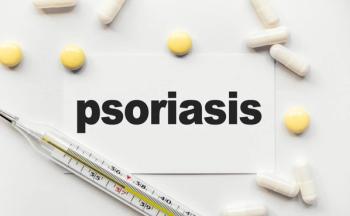
Gallup-Sharecare Survey Finds 11.6% of US Adults Have Diabetes; Tops CDC Study
While Gallup-Sharecare and CDC had different ways of calculating diabetes prevalence, the bottom line is the same: the rate is too high and continues to climb in an alarming way. The survey featured breakdowns on diabetes prevalence by occupation.
The diabetes rate reached 11.6% among US adults in 2016, a new survey from Gallup and Sharecare
The survey rate climbed from 10.6% in 2008, which means approximately 2.5 million more people have diabetes now than if the rate had remained steady, according to Dan Witters, research director of the Gallup-Sharecare Well-Being Index. While Gallup-Sharecare and CDC have separate ways of calculating US diabetes prevalence--from different data sets to different ways of weighting them--Witters said the bottom line is the same: “It continues to grow, and it continues to grow in a way that’s pretty alarming.”
Gallup and Sharecare ask survey respondents a simple question: “Has a doctor or nurse ever told you that you have diabetes?” The questioner does not distinguish between type 1 (T1D) or type 2 diabetes (T2D), and if anything, there’s concern that this method may miss people who know they take medication for “blood sugar” but don’t realize they have T2D.
But Gallup-Sharecare and CDC agree on several things: the likelihood of diabetes rises as education and income fall, and rates of diabetes are greatest in the South and Appalachia, where people are comparatively poor and less educated. Historically, residents here have had less access to healthcare as well; while some states like Kentucky and West Virginia, and recently Louisiana, have expanded Medicaid under the Affordable Care Act, (ACA), most states in this region have not.
Witters said the ongoing rise in diabetes is not a surprise given the continued increase in obesity. “Until obesity slows, diabetes is going to continue to go up. It can’t help but go up,” he said. He said for a few years, from 2010 to 2013, it appeared that obesity was flattening out, and diabetes did, too. “But over the past 3 years or so, (obesity) is pushing its way back up again.”
Because obesity continues to increase among people in their prime working years, “I am personally not optimistic, that this is flattening out,” Witters said.
Some Occupations Hit Harder Than Others
A key feature of the Gallup-Sharecare study is the analysis of diabetes rates by occupation. Workers overall are younger and healthier, and this is seen in a diabetes rate of 6.9%, compared with the 23.9% for people age 65 and older. But transportation workers—a category that includes long haul truck drivers—have a rate of 10.3%, compared with physicians, who have the lowest rate at 5.1%. It’s easy to understand why truckers are at risk—they sit all day and eat lots of fast food. But farmers and forestry workers? Their rate of 8.5% reflects their age, which doesn’t offset their activity.
Smoking and drinking, which are more common in some jobs than others, can offset the positive effects of physical activity.
What can employers do? Sheila Holcomb of Sharecare (formerly Healthways) said the findings show “We have to take diabetes education outside the walls of the hospital.”
Case Studies Show Effects of Benefit Design
Holcomb said project in Munroe Regional Medical Center reveals how changes in benefit design—which require higher out-of-pocket costs for people with diabetes—affect outcomes, and may cause employers to rethink cost-sharing arrangements for people with diabetes.
In the project, organized with the insurer Florida Blue, 1 group of school district employees with diabetes was given diabetes education classes at times that did not conflict with school hours, as well as free testing supplies and medication—including insulin. This group had a 9% decrease in total healthcare costs, factoring in the cost of the free medicine and supplies. Meanwhile, a second group that did not take part in the program had a 39% increase in total healthcare costs.
“Today, after 10 years, 47% of the participants remain active in the program and receive annual screening, program benefits, and 2 hours of follow-up education,” the report states.
Holcomb said these results show the importance of continuing diabetes education across the lifespan—which is the policy position of the American Association of Diabetes Educators. (The need for payers to cover diabetes self-management education and support at 4 key time points was the subject of a
Diabetes education need to be ongoing, Holcomb said. While coverage for education is better than it was 10 years ago, changing benefit designs have made co-pays too high for some.
“Things will change. Medications will change,” she said. “Patients need to have the opportunity to change through their lifespan.”
Newsletter
Stay ahead of policy, cost, and value—subscribe to AJMC for expert insights at the intersection of clinical care and health economics.







































